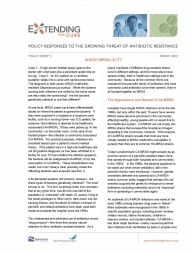June 14, 2010

Case 1: A high school football player goes to the doctor with what looks like a persistent spider bite on his leg. Case 2: An ICU patient on a ventilator suddenly slides into a coma with severe pneumonia. The diagnosis in both cases: MRSA (methicillin-resistant Staphylococcus aureus). While the bacteria causing both infections are called by the same name, are they really the same thing? Are the bacteria genetically identical or are they different?
At one level, MRSA cases have been differentiated based on where the patient acquired the bacteria. If they were acquired in a hospital or a long-term care facility, such as a nursing home—our ICU patient, for instance—the infection is deemed to be healthcare-associated (HA-MRSA). If they were picked up “in the community”—in the locker room, in the case of our football player—the infection is community-associated (CA-MRSA). For practical purposes, infections are classified based upon a patient’s recent medical history. If the patient was in a high-risk healthcare site not long before diagnosis (or has been admitted in a facility for over 72 hours before the infection appears), the bacteria will be categorized HA-MRSA; if not, the assumption is CA-MRSA. These classifications are useful, but it isn’t always clear precisely where the offending bacteria were acquired (see Box 1).
A fundamental question still remains, however: are these types of bacteria genetically identical? The short answer is no. This isn’t surprising when one considers that at any given time, one-third to one-half of the population is “colonized” with staph (S. aureus, living in the nasal passages or other warm, dark areas, but not causing illness), and hundreds of millions of doses of penicillin and related antibiotics have been used both inside and outside the hospital since the 1950s.

